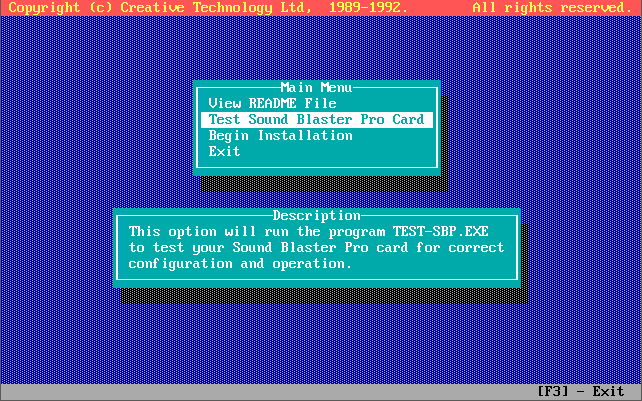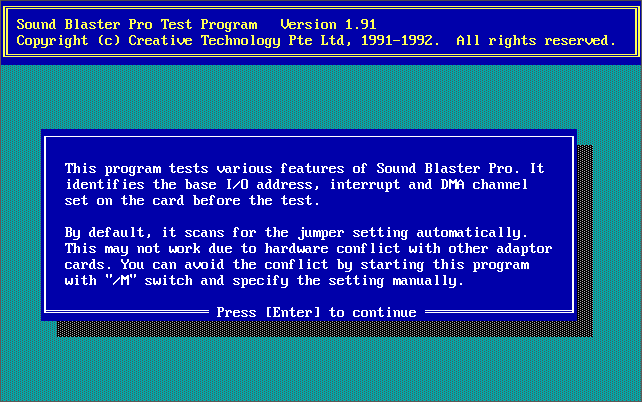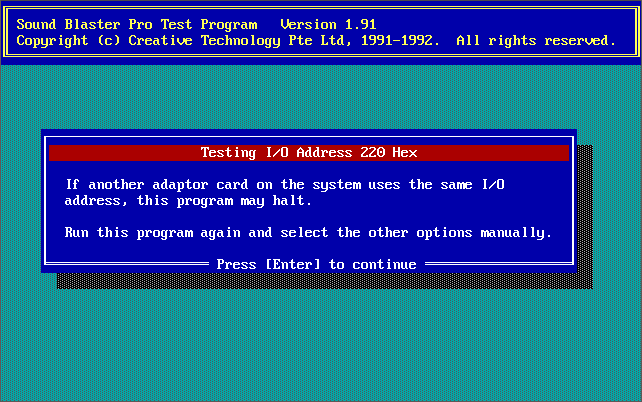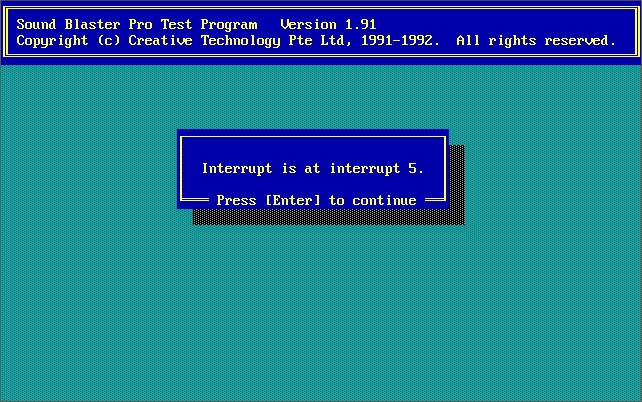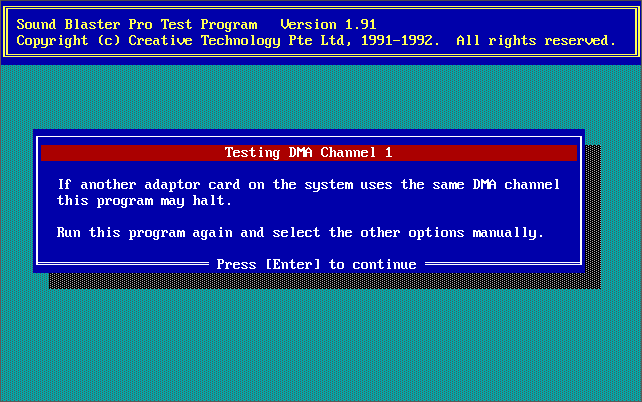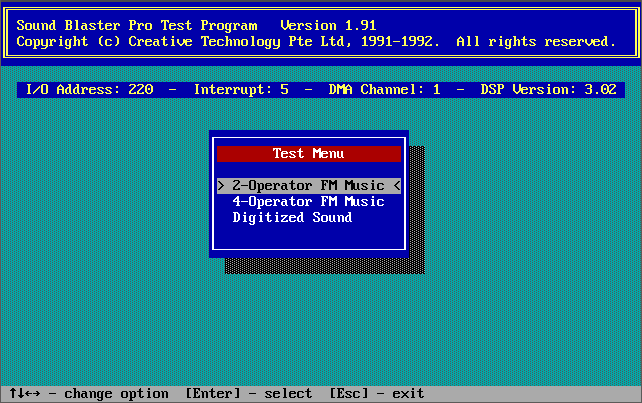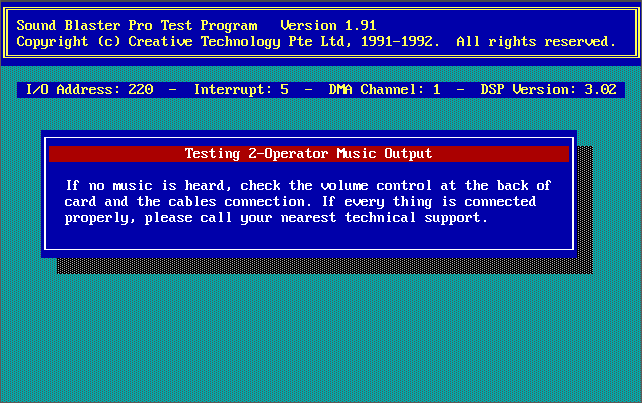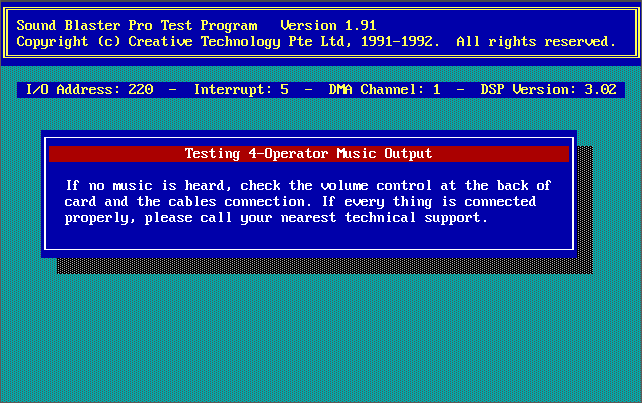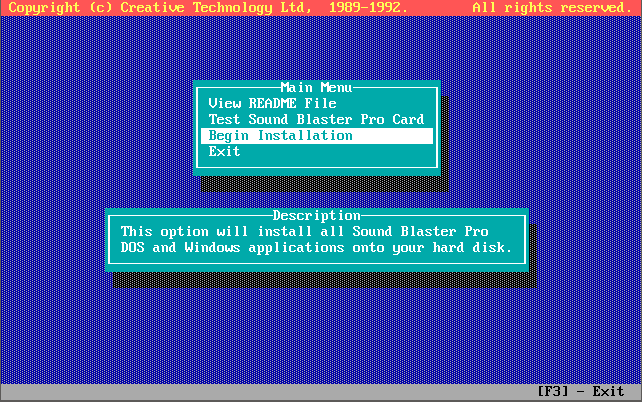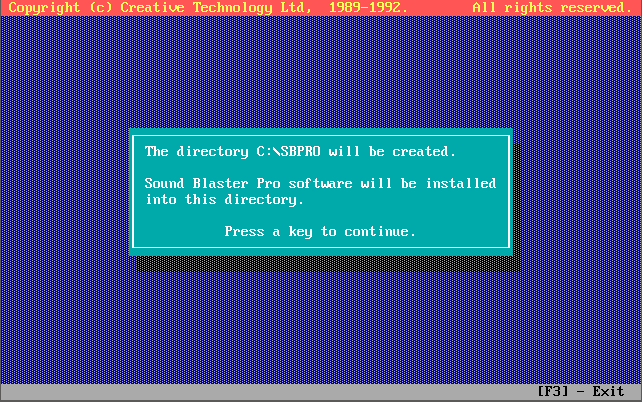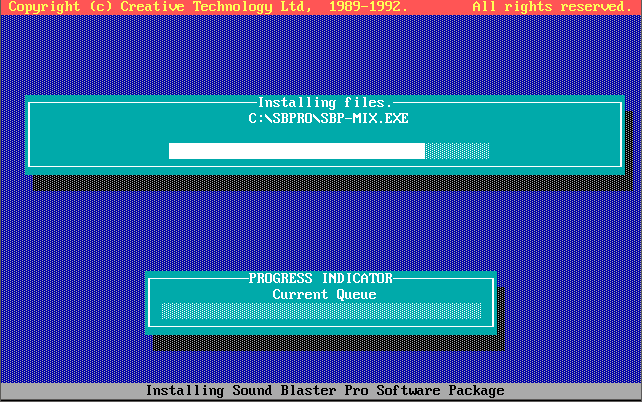Retro Review: Creative Labs Sound Blaster Pro 2 - Part 2
25th July 2023
In Part 1 I took a good look around this old Creative Labs Sound Blaster Pro II from 1992, model CT1600. In this part, we'll install the original software that came with it, get it all configured and do some early testing. Here's the card again:
Creative Labs Sound Blaster Pro II (CT1600)
Software Installation
The Sound Blaster Pro came with drivers and utility software on two high-density 3.5" floppy disks, plus in some releases, several other bundled software packages and games. In summary it comprised the following:
- Sound Blaster Pro Disk #1 - INSTALL, TEST-SBP, SBFMDRV, INST-DRV, SBP-MIX, SBP-SET, SET-ENV
- Sound Blaster Pro Disk #2 - WINSETUP, SBMIDI, others
- Text-to-Speech Disk #1 - The text-to-speech program from Creative
- HSC Interactive Special Edition
- Indianapolis 500 The Simulation
- Lemmings
There were a number of revisions of the driver and utility software, but there's very little difference in their usage or functionality. For completeness, these are the ones that I uncovered:
| (Unknown - the oldest?) | Dated 20th November 1991. INST-DRV v1.81, TEST-SBP v1.82, SET-ENV v1.03A, SBP-MIX v1.00, SBP-SET v1.02, (no SBMIDI driver), SBFMDRV v1.30. Has Dr.SBAITSO, Talking Parrot, MMPlay, SBTalker, PlayCD, PlayCMF |
| Sound Blaster Pro Deluxe DSBP-STD-01 (Revision 1) | Dated 8th February 1993. INSTALL v3.23c, TEST-SBP v1.91, SET-ENV v1.04, SBP-MIX v2.00, SBP-SET v1.21, SBMIDI v1.21, SBFMDRV v1.32. The INSTALL utility cannot install from the hard disk - you need to install from a floppy drive. This means you cannot copy the contents of all the floppies to a hard disk subdirectory and install from there. |
| Sound Blaster Pro Deluxe DSBP-STD-01 (Revision 3) | Dated 20th March 1993. INSTALL v3.53c, TEST-SBP v1.91, , SET-ENV v1.04, SBP-MIX v2.00, SBP-SET v1.21, SBMIDI v1.22, SBFMDRV v1.33. The INSTALL utility now looks in the same directory as the INSTALL.EXE file, so you can install everything if you've copied the contents of the floppies to a hard disk directory. |
| Sound Blaster Pro Deluxe DSBP-STD-01 (Revision 5) | Dated 22nd May 1993. INSTALL v4.06d, TEST-SBP v1.91, SET-ENV v1.04, SBP-MIX v2.00, SBP-SET v1.21, SBMIDI v1.22, SBFMDRV v1.33. Smaller README than rev.1 with no detail on what each file is for. Slightly larger INSTALL.EXE but smaller INSTALL.001 and INSTALL.002 compressed files to that in rev.1. The INSTALL utility looks in the same directory as the INSTALL.EXE file, so you can install everything if you've copied the contents of the floppies to a hard disk directory. |
Running INSTALL from Disk 1 (Rev.1 onwards) takes you through these options, including running the TEST-SBP utility to test the card is configured properly and is outputting sound, both FM and Digital audio. It all pretty self-explanatory, taking you through testing the card on the I/O address, interrupt request line, and DMA channel, and if it's all good you can continue to install the files to your hard disk:
Unless the provided software is something you want to try out, you don't need any of it to play games with your Sound Blaster Pro card. All most games look for is the BLASTER environment variable, which by default is set to:
BLASTER=A220 I5 D1 T4
where:
A = the I/O address - either 220h or 240h depending on the setting at jumper JP13 (ON for 220h) or JP14 (ON for 240h).
I = the IRQ - either 2, 5, 7 or 10 depending on which jumper is ON in jumper block JP18 - JP21.
D = the DMA channel to use for FM audio - either 0, 1 or 3 depending on which jumper is ON in jumper block JP5 - JP7.
T = the Sound Blaster card 'type'
- for the Sound Blaster Pro, this is always 4.
If you have an older revision of the CT1600, the IRQ will default 7 instead of 5 - IRQ7 was often used by a PC's parallel port so conflicts were common, hence Creative Labs' decision to make the default IRQ5 instead.
It is worthwhile running the mixer utility, SBP-MIX (or a decent third-party one that is compatible with the SBP), to set the levels of the inputs and outputs. This will help reduce unwanted noise coming over in the mixed output. For example, if you're not using the MIC input for anything this should be dropped to a level of '0' in the mixer. The same for CD audio if you're not using that, and even the main Master and FM levels ideally shouldn't be maxed out at '15' - try them at something like '12' so the card doesn't distort, and connect a good-quality set of amplified speakers to your Speaker Out jack. Incidentally, when changing the levels in the SBP-MIX utility, your changes *DO NOT* get updated on the SBP-SET line in AUTOEXEC.BAT, so these will need to be edited manually if you wish to keep the settings after every reboot.



The SB-MIX utility, where you can adjust volume levels of the various inputs and output, change the filtering, etc.
Part 3 is probably the most exciting, as I record and compare this card's audio output to a selection of other stereo sound cards! Please note that Part 3 contains a lot of audio tracks which will pre-load, taking up a lot of MB. I recommend you only load the next page if you are on a fixed network where you're not paying by the Megabyte!
.jpg)



